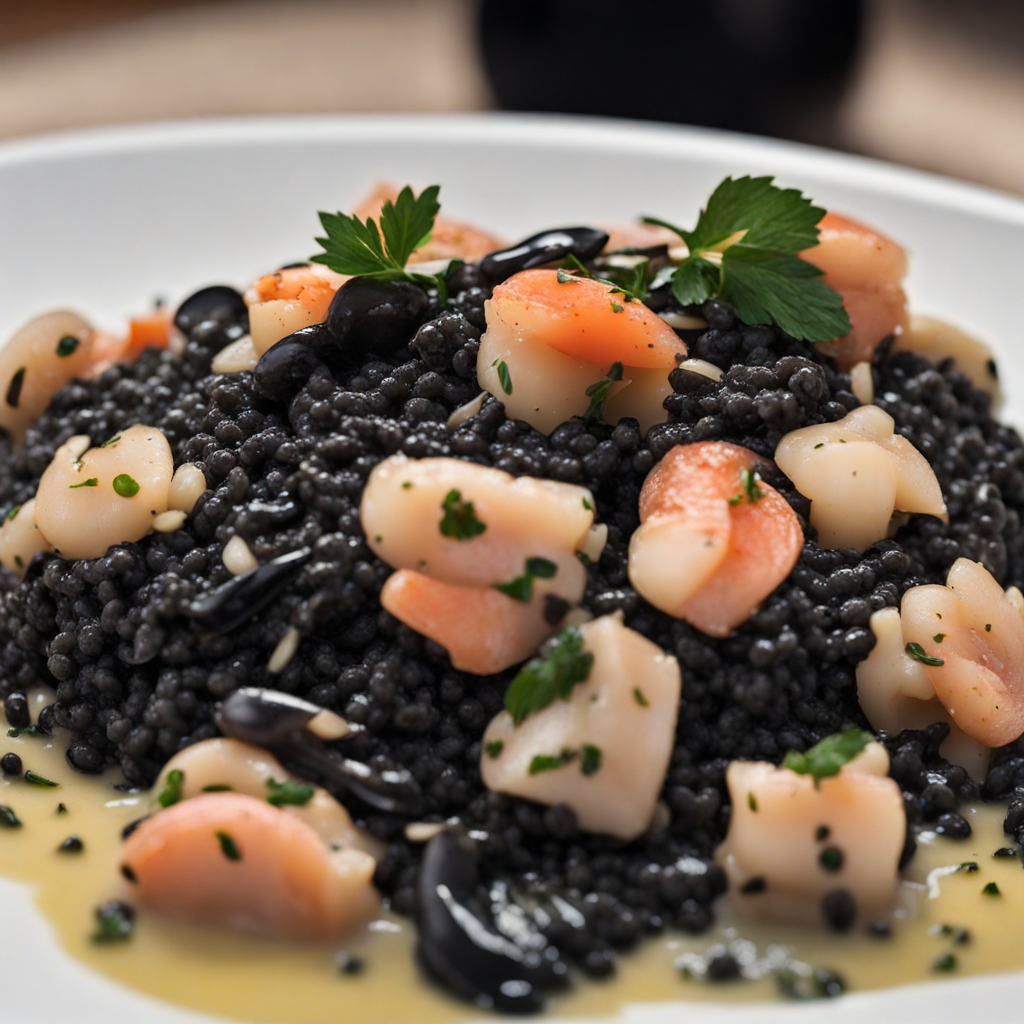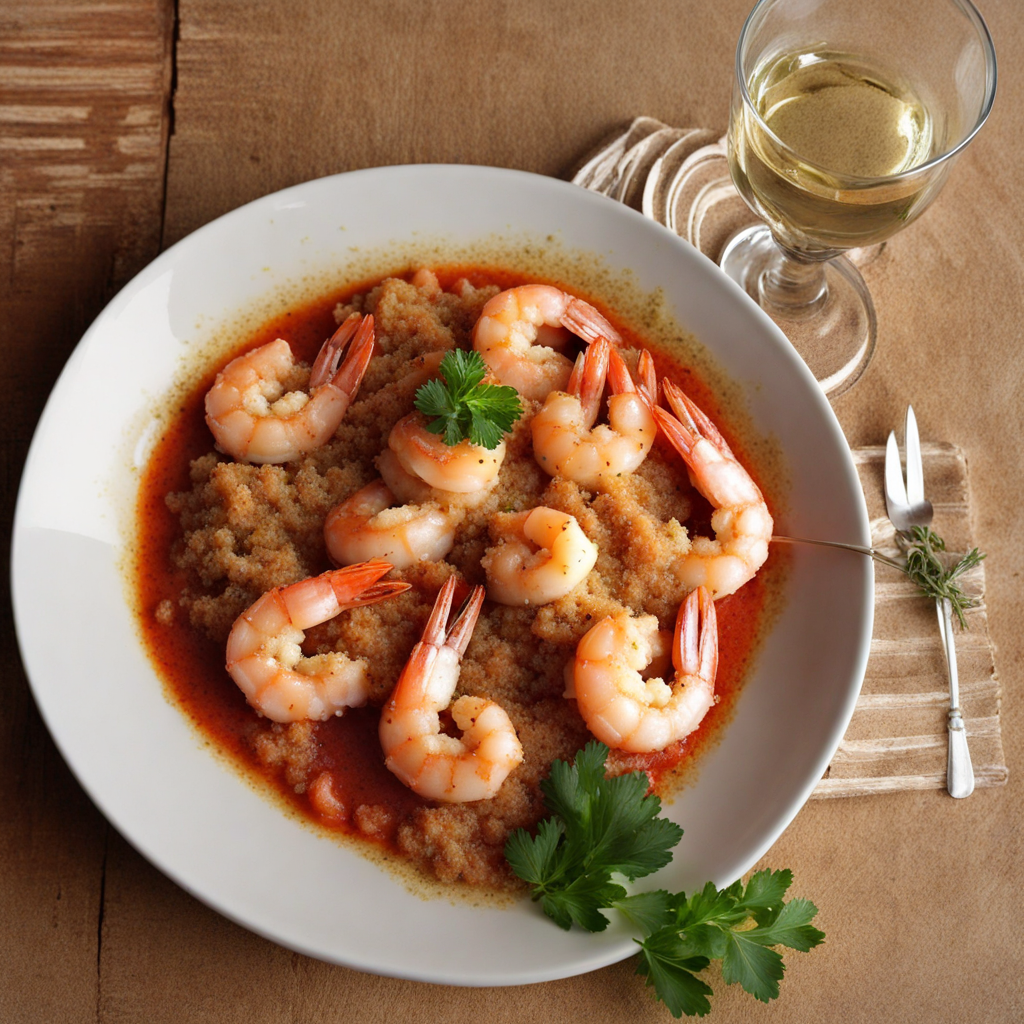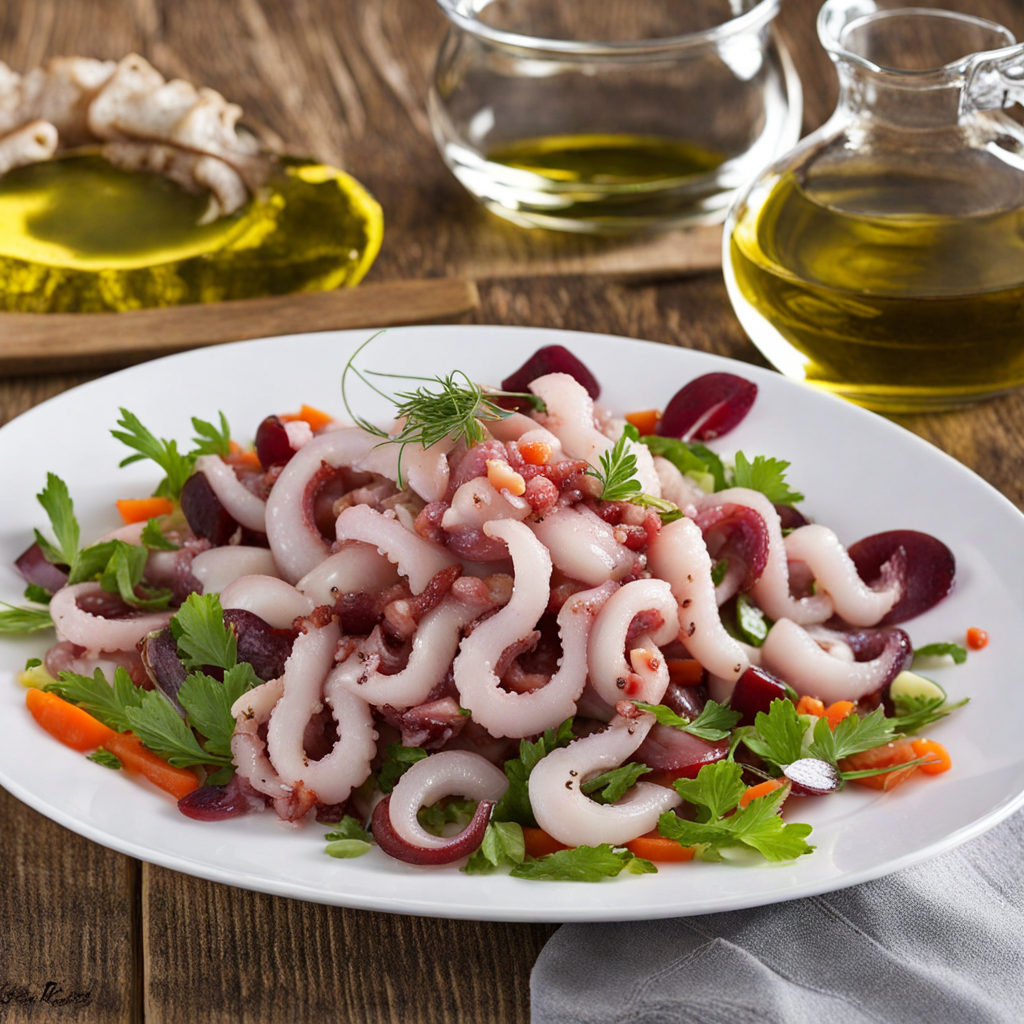Risotto Nero
Risotto Nero is a unique and visually striking dish that hails from the picturesque coastal regions of Croatia, particularly in areas like Istria and Dalmatia. This dish is characterized by its deep black color, which comes from the use of cuttlefish or squid ink, giving it a distinct and intriguing appearance. The risotto itself is creamy and rich, made with high-quality Arborio rice, which absorbs the flavors beautifully while maintaining a satisfying al dente texture. Each spoonful is a delightful combination of the briny, oceanic essence of the ink and the comforting, creamy base of the risotto, creating a dish that is as comforting as it is adventurous. Flavor-wise, Risotto Nero offers a symphony of tastes that transport you to the Adriatic Sea. The ink imparts a subtle sweetness and umami depth, perfectly complemented by fresh seafood such as shrimp or mussels that are often included in the dish. Aromatic elements such as garlic, onion, and parsley are typically used to enhance the overall flavor profile, creating a harmonious balance that allows the oceanic notes to shine through. A drizzle of olive oil and a sprinkle of freshly grated cheese may finish the dish, adding a luxurious touch to this already extravagant meal. Serving Risotto Nero is an experience in itself, often garnished with a wedge of lemon to brighten the flavors and a sprig of fresh herbs for a pop of color. It's a dish that not only excites the palate but also invites curiosity and conversation at the dining table. Enjoyed best with a glass of crisp white wine, Risotto Nero is a celebration of Croatian coastal cuisine that beckons food lovers to dive into its depths and discover a taste that is both exotic and deeply satisfying.
How It Became This Dish
Crni Rižot: A Culinary Journey Through Croatia’s Rich Heritage Crni rižot, or black risotto, is a dish that encapsulates the essence of Croatia's coastal culinary landscape. Originating from the picturesque Dalmatian coast, this unique risotto is distinguished by its deep black color, which is imparted by the use of cuttlefish or squid ink. This dish is not only a testament to the region's bountiful seafood but also a reflection of the cultural tapestry that has woven itself around Croatian gastronomy over centuries. Historical Origins The roots of Crni rižot can be traced back to the Mediterranean’s rich maritime history. The Adriatic Sea, with its diverse marine life, has long been a source of sustenance for the coastal communities of Croatia. The use of squid ink in cooking is an age-old practice, believed to have originated from the Italian risotto tradition. However, the Croatian version has developed its own unique character, influenced by local ingredients, flavors, and cooking techniques. The arrival of the Venetians during the Middle Ages significantly impacted the coastal regions of Croatia, introducing new culinary practices and ingredients. Seafood became a staple, and the tradition of cooking rice with various marine ingredients began to flourish. Cuttlefish and squid, abundant in the Adriatic waters, quickly became popular, leading to the creation of Crni rižot. The dish is a perfect embodiment of the sea’s bounty, showcasing the flavors of fresh seafood and the aromatic quality of local herbs. Cultural Significance Crni rižot holds a special place in Croatian culture, especially along the Dalmatian coast. It is often served at family gatherings, celebrations, and special occasions, symbolizing hospitality and the communal nature of Croatian dining. The preparation of this dish is often a collaborative effort, bringing family and friends together in the kitchen, which reflects the importance of togetherness in Croatian culture. In addition to its role as a beloved dish, Crni rižot also serves as a cultural marker, representing the connection between the land and the sea. The dish encapsulates the essence of Dalmatian cuisine, which is characterized by its simplicity, freshness, and reliance on local ingredients. The use of squid ink in Crni rižot is a celebration of the region’s maritime identity, connecting generations of cooks to their ancestors who relied on the sea for sustenance. Ingredients and Preparation The primary ingredients of Crni rižot include Arborio rice, fresh cuttlefish or squid, garlic, onions, olive oil, white wine, and, of course, squid ink. The preparation of Crni rižot is both an art and a science, requiring skillful attention to achieve the perfect creamy texture that risotto is known for. To prepare Crni rižot, the cook starts by sautéing finely chopped onions and garlic in olive oil until translucent. Fresh cuttlefish or squid, cleaned and cut into small pieces, is added to the mixture and cooked until tender. The rice is then introduced, allowing it to absorb the flavors of the seafood. White wine is added for acidity, followed by a gradual addition of fish stock, which is crucial in achieving the desired consistency. The crowning touch is the squid ink, which not only imparts a striking color but also a rich, briny flavor that defines the dish. Finally, the risotto is finished with a drizzle of high-quality olive oil and often garnished with fresh parsley or lemon zest. Evolution and Modern Interpretations Over the years, Crni rižot has evolved, influenced by changing tastes and culinary trends. While traditional recipes remain popular, contemporary chefs are experimenting with new techniques and flavors, incorporating elements from other cuisines. Some variations may include the addition of saffron for a unique twist or the incorporation of seasonal vegetables, enhancing the dish's complexity and visual appeal. In recent years, there has been a resurgence of interest in traditional Croatian cuisine, spurred by a growing appreciation for local, sustainable ingredients. As a result, Crni rižot has gained recognition not only within Croatia but also on the international culinary stage. It has been featured in gourmet restaurants, food festivals, and culinary tours, introducing a wider audience to this exquisite dish. Moreover, the rise of eco-conscious dining has led many chefs to emphasize the importance of sustainable fishing practices, ensuring that the seafood used in Crni rižot is sourced responsibly. This commitment to sustainability resonates with the traditional values of Croatian cuisine, which has always celebrated the connection between food, nature, and culture. Culinary Tourism and Global Recognition The allure of Crni rižot has also played a significant role in the development of culinary tourism in Croatia. Tourists flock to the Dalmatian coast not only for its stunning landscapes but also for its rich culinary heritage. Cooking classes and food tours centered around traditional dishes like Crni rižot have become increasingly popular, allowing visitors to immerse themselves in the local culture and learn the secrets of this iconic dish. The global recognition of Croatian cuisine has been bolstered by the country’s increasing presence in international culinary events and competitions. Chefs from Croatia have garnered attention for their innovative interpretations of traditional dishes, showcasing the versatility and depth of Crni rižot. As a result, many food enthusiasts are now seeking out authentic Croatian experiences, eager to taste the flavors of the Adriatic. Conclusion Crni rižot is more than just a dish; it is a celebration of Croatia’s rich culinary heritage, a symbol of community and tradition, and a testament to the beautiful relationship between the land and the sea. Its evolution over time has seen it adapt to contemporary tastes while remaining rooted in its historical origins. As it continues to garner recognition on the global culinary stage, Crni rižot stands as a delicious reminder of the stories, cultures, and connections that food can forge, making it a beloved dish cherished by both locals and visitors alike. Whether enjoyed in a cozy family home or a bustling seaside restaurant, Crni rižot invites all to partake in the flavors of Croatia’s vibrant coastal identity.
You may like
Discover local flavors from Croatia







